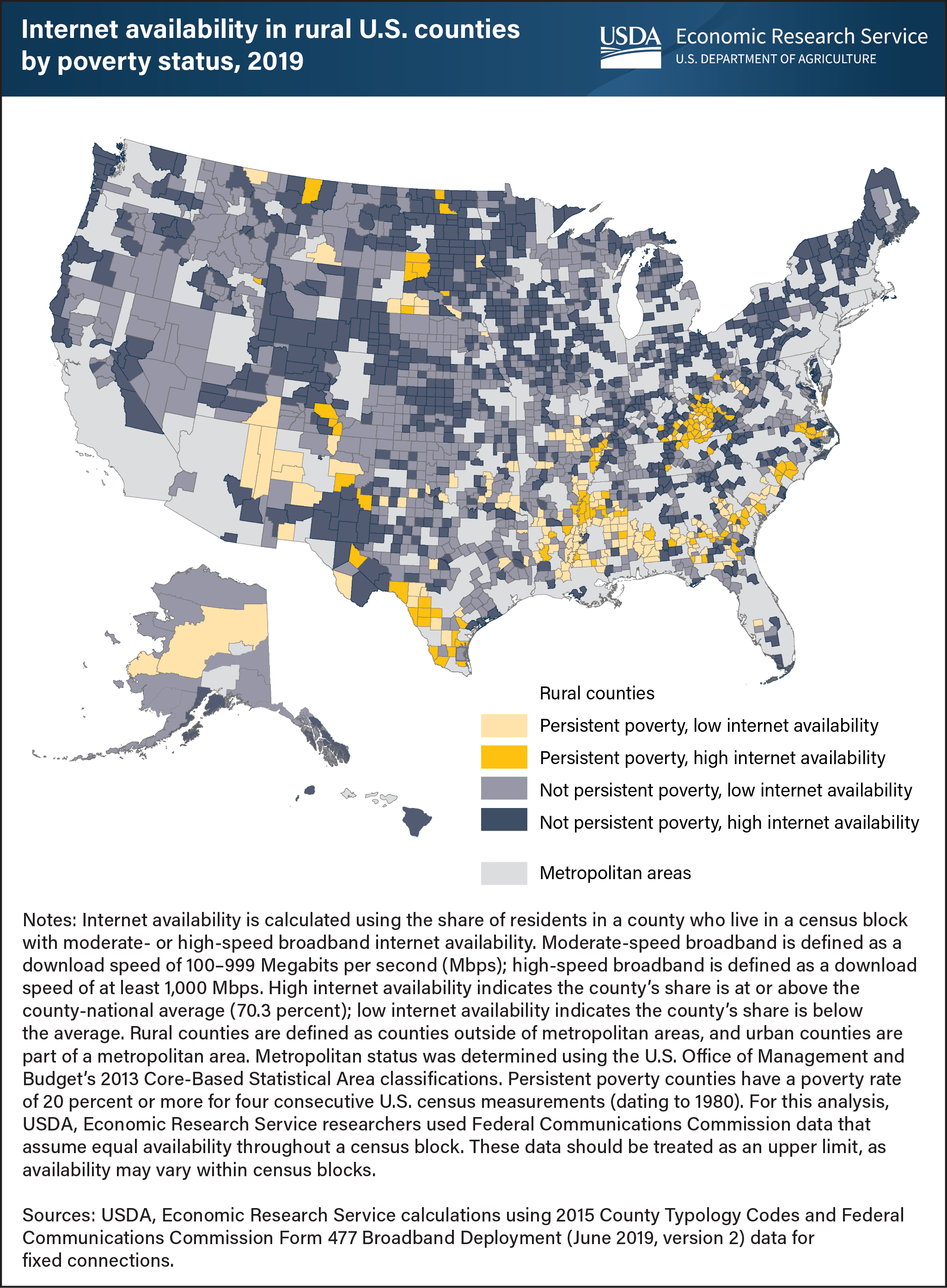Less internet access available for rural residents in counties with persistent poverty in the U.S. Deep South and Southwest
- by Kelsey L. Thomas (Conley) and Elizabeth A. Dobis
- 1/14/2022

Access to fast internet speeds has been crucial throughout the Nation with the increased online presence of school, work, and shopping due to the (Coronavirus) COVID-19 pandemic. In June 2019, the moderate- or high-speed broadband internet needed for high-quality video calls was available in the census blocks of more than 90 percent of U.S. residents. In rural counties, however, only 72 percent residents had access to those internet speeds. Only 63 percent of rural residents in counties with persistent poverty had moderate or high-speed broadband available in their census blocks. Counties are considered persistently poor if they have a poverty rate of 20 percent or more for four consecutive U.S. Census measurements dating back to 1980. Among persistently poor rural counties, high availability of moderate or high-speed internet was clustered in and around eastern Kentucky and southern Texas. Rural persistently poor counties in the Deep South and Southwest had low internet availability, as did rural counties in the lower Great Plains and western Mountain States that were not persistently poor. Rural counties without persistent poverty that had high internet availability were scattered throughout the eastern half of the United States and clustered in the upper Great Plains and eastern Mountain States. This map was first published in the USDA, Economic Research Service report Rural America at a Glance: 2021 Edition.

